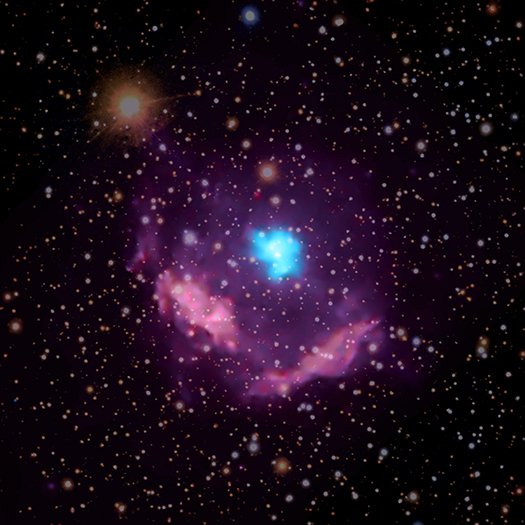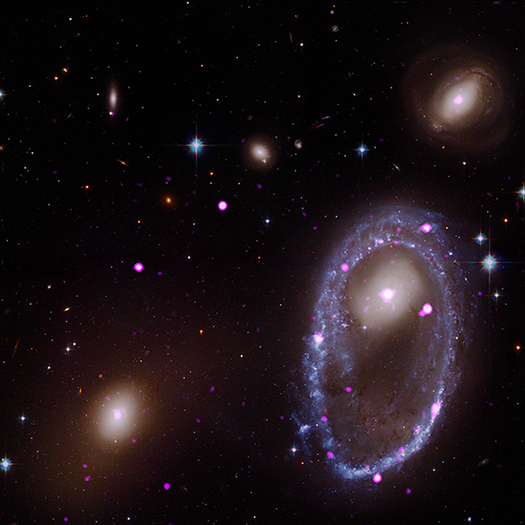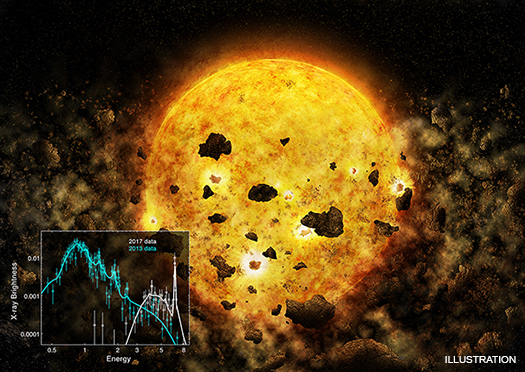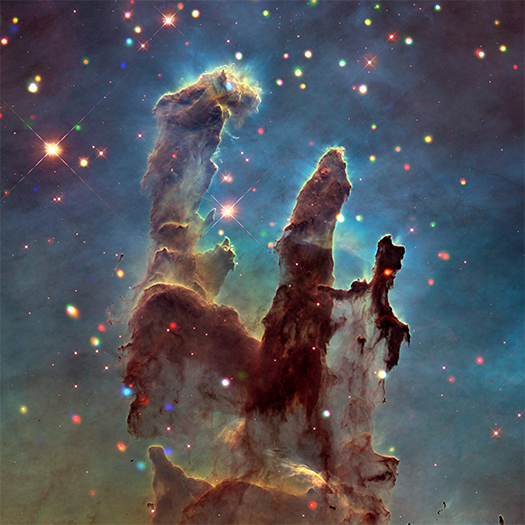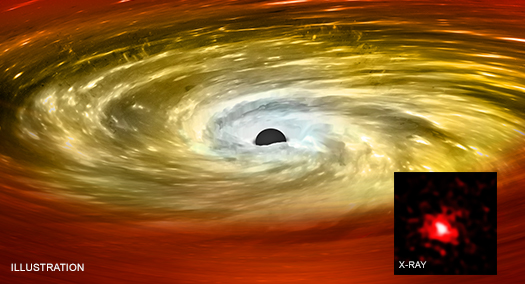Q&A on Chandra's Safe Mode and Gyroscopes, Part II

(Q&A on Chandra's Safe Mode and Gyroscopes, Part I)
On October 21, Chandra returned to science observations, less than two weeks after a glitch in one of its four gyroscopes caused it to go into Safe Mode. To answer some of the questions surrounding Chandra’s gyroscopes, members of the Chandra X-ray Center and its Flight Operations Team have put together this Q&A.
Angle Matters: A New Perspective on Neutron Star Collisions Solves an Old Mystery

Eleonora Troja
We are very pleased to welcome Eleonora Troja as our guest blogger. She is an associate research scientist at the University of Maryland, College Park, with a joint appointment at NASA Goddard Space Flight Center. She divides her time between her research on colliding neutron stars, directing the Swift Guest Investigator Program, and her three-year-old daughter, Bianca.
A year ago, on October 16th 2017, an amazing discovery was announced. GW170817, a collision of two neutron stars seen through gravitational waves and light, had realized the perfect union of two worlds. At the press conference organized by the National Science Foundation, a journalist asked an important question to the panelists: “Hadn’t we seen similar events before?” In that moment my mind ran back to an unusual gamma-ray burst, GRB150101B, localized by NASA’s Swift satellite nearly three years earlier.
GRB150101B was a flash of gamma-ray radiation that lasted for less than a fraction of a second. It was one of the weakest explosions ever seen with Swift, yet it was very luminous in X-rays and for a very long time. This was so unusual that Swift scientists were not sure whether the burst was a gamma ray burst (GRB) or another type of weird explosion, and dubbed it with a dual name GRB 150101B / SwiftJ123205.1-1056. I asked that NASA’s Chandra X-ray Observatory observe this object and help us unravel the mystery of its nature. Chandra revealed that there were two sources of X-ray light, not resolved by the Swift observations. A bright X-ray source was located at the center of the galaxy, probably indicating the presence of a supermassive black hole. Next to it, Chandra discovered a weaker X-ray signal coming from GRB150101B. At the same position, telescopes caught a glow of visible light which quickly faded away.
Chandra Operations Resume After Cause of Safe Mode Identified

At approximately 9:55 a.m. EDT on October 10, 2018, NASA’s Chandra X-ray Observatory entered Safe Mode, where the telescope’s instruments are put into a safe configuration, critical hardware is swapped to back-up units, the spacecraft points so that the solar panels get maximum sunlight, and the mirrors point away from the Sun. All systems functioned as expected and the scientific instruments are safe.
The cause of Chandra's safe mode on October 10 has been researched and the Operations team has successfully returned the spacecraft to its normal pointing mode. The safe mode was caused by a glitch in one of Chandra's gyroscopes resulting in a 3-second period of bad data that in turn led the on-board computer to calculate an incorrect value for the spacecraft momentum. The erroneous momentum indication then triggered the safe mode. The team has completed plans to switch gyroscopes and place the gyroscope that experienced the glitch in reserve. Once configured with a series of pre-tested flight software patches, the team will return Chandra to science operations which are expected to commence next week.
Below are some questions and answers with additional technical detail, incorporating the latest information as of Monday October 15th, 2018.
Milky Way's Youngest Pulsar Exposes Secrets of Star's Demise
Scientists have confirmed the identity of the youngest known pulsar in the Milky Way galaxy using data from NASA's Chandra X-ray Observatory. This result could provide astronomers new information about how some stars end their lives.
Making Head or Tail of a Galactic Landscape
Astronomers have used data from NASA's Chandra X-ray Observatory to capture a dramatic image of an enormous tail of hot gas stretching for more than a million light years behind a group of galaxies that is falling into the depths of an even-larger cluster of galaxies. Discoveries like this help astronomers learn about the environment and conditions under which the Universe's biggest structures evolve.
Galaxy clusters are the largest structures in the Universe held together by gravity. While galaxy clusters can contain hundreds or even thousands of individual galaxies, the lion's share of mass in a galaxy cluster comes from hot gas, which gives off X-rays, and unseen dark matter. How did these cosmic giants get to be so big?
Cosmic Collision Forges Galactic One Ring — in X-rays
Astronomers have used NASA's Chandra X-ray Observatory to discover a ring of black holes or neutron stars in a galaxy 300 million light years from Earth.
Finding the Happy Medium of Black Holes

Credit: X-ray: NASA/CXC/ICE/M.Mezcua et al.;
Infrared: NASA/JPL-Caltech; Illustration: NASA/CXC/A.Hobart
This image shows data from a massive observing campaign that includes NASA's Chandra X-ray Observatory. These Chandra data have provided strong evidence for the existence of so-called intermediate-mass black holes (IMBHs). Combined with a separate study also using Chandra data, these results may allow astronomers to better understand how the very largest black holes in the early Universe formed, as described in our latest press release.
The COSMOS ("cosmic evolution survey") Legacy Survey has assembled data from some of the world's most powerful telescopes spanning the electromagnetic spectrum. This image contains Chandra data from this survey, equivalent to about 4.6 million seconds of observing time. The colors in this image represent different levels of X-ray energy detected by Chandra. Here the lowest-energy X-rays are red, the medium band is green, and the highest-energy X-rays observed by Chandra are blue. Most of the colored dots in this image are black holes. Data from the Spitzer Space Telescope are shown in grey. The inset shows an artist's impression of a growing black hole in the center of a galaxy. A disk of material surrounding the black hole and a jet of outflowing material are also depicted.
"X"-ploring the Eagle Nebula and "Pillars of Creation"
The Eagle Nebula, also known as Messier 16, contains the young star cluster NGC 6611. It also the site of the spectacular star-forming region known as the Pillars of Creation, which is located in the southern portion of the Eagle Nebula.

